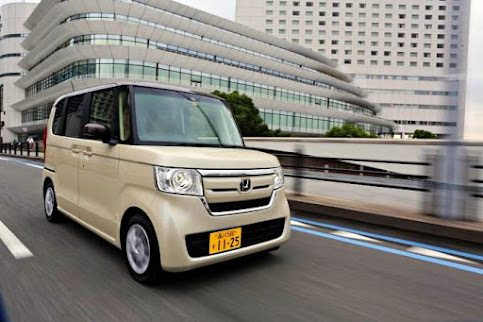 |
| The 2001 Vitz |
Toyota: It has a range of dealerships known as stores that handle different models. Toyota dealers sell premium vehicles, Toyopet dealers offer medium-priced cars, Corolla dealers provide mass-market models, and Netz dealers target younger drivers. Each chain has its exclusively sold vehicles.
This is despite it doesn't even have a meaningful presence in the Kei car segment, which accounts for about a third of all sales. So Toyota takes about half of all regular car sales, something its four dealer styles has helped it to do.
It is going to change how it does business as sales continue to steadily fall in Japan. However, for the chart below, the clear dominance of the brand is obvious. Bear in mind that Lexus sales were taken off Toyota's for the last dozen years.
 |
| A 2005 Nissan Note |
Nissan: They were for a long time a real competitor for Toyota but by 1995, the gap was widening and in 2020 it is one of the smaller of the local brands. The change seems to be that while the better selling models are still there, below them the numbers have shrunk. In this time it has gone from a brand with no Kei range to one accounting for about a third of sales.
Mitsubishi: This was the third best selling brand in 1995, but is now the smallest. From around 450,000 to barely managing 50,000! Virtually everything that applies to Nissan seems to fit here too. One exception is its Kei car mix is now half. Both have lost out badly in the regular car arena.
 |
| The Honda N-Box a winner |
Honda: It's done rather well for itself. Back in 2000, its Kei contribution was a third and now its a half. Not much has changed except for the N-Box model which is a huge success.
Suzuki: It has steadily improved over the years, almost totally reliant on Kei models. Recently it has pulled back on them, from around 90% for many years to below 80%.
Daihatsu: Toyota's Kei brand, it has mainly hovered around the 95% and presently 90%. Of course, too much reliance on one category would be a disaster if that area suddenly fell for whatever reason. Maybe why some brands are moving away from total reliance on them.
Mazda: A brand that has taken 85-90% of its sales in the regular segment, with little reliance on Kei cars. That has pitted against Toyota, so unsurprisingly it hasn't done that well.
Subaru: It used to have over 40% of its sales from Kei but now not much more than 10%. It has a unique target market and while that isn't big, it is stable. Fewer sales over the years are lost Kei sales and I assume they are less profitable anyway.


No comments:
Post a Comment